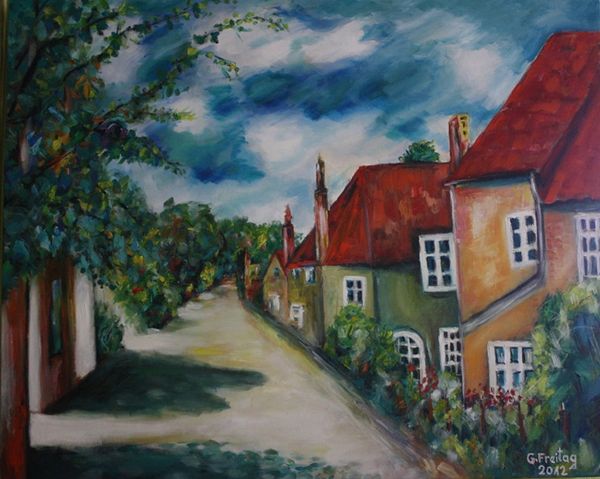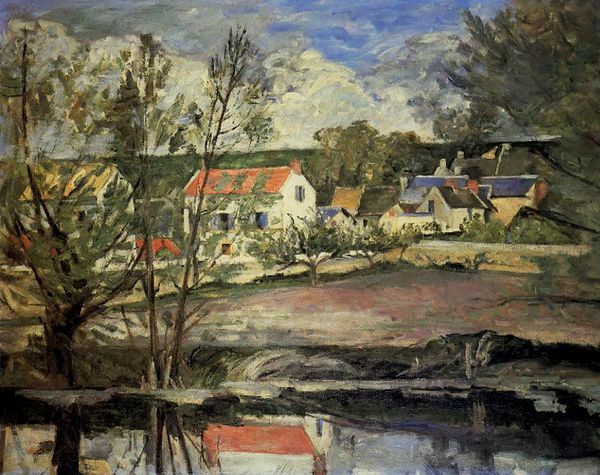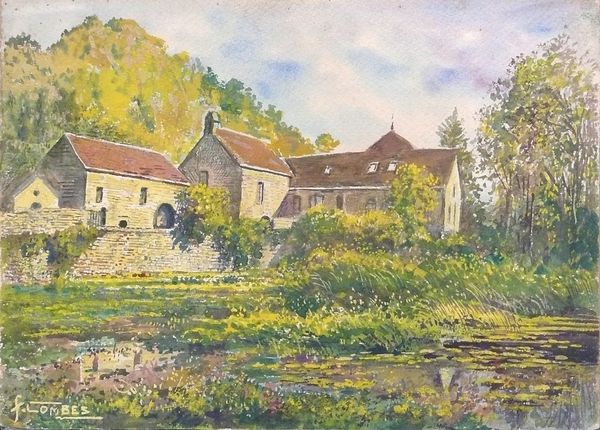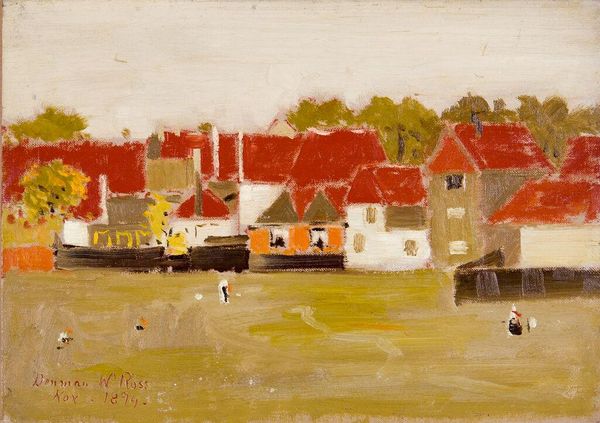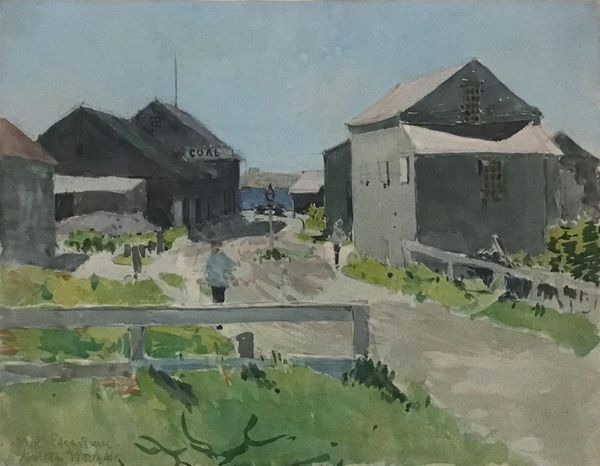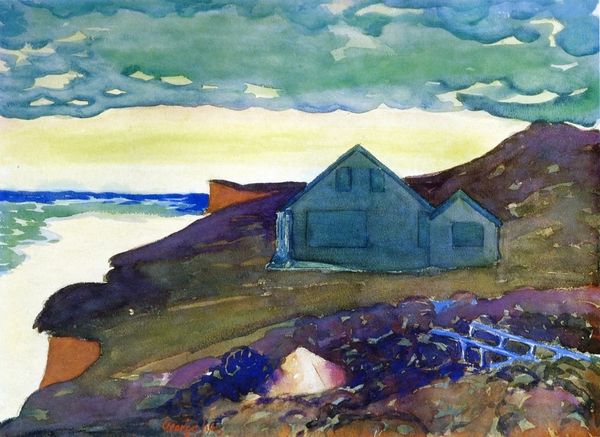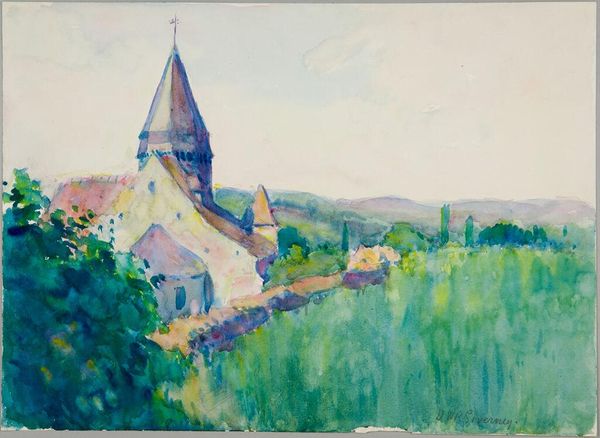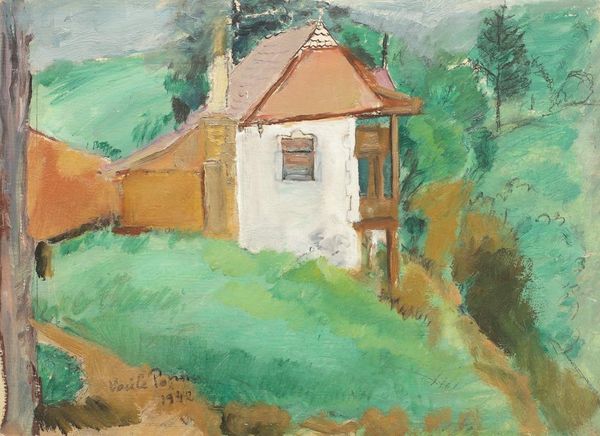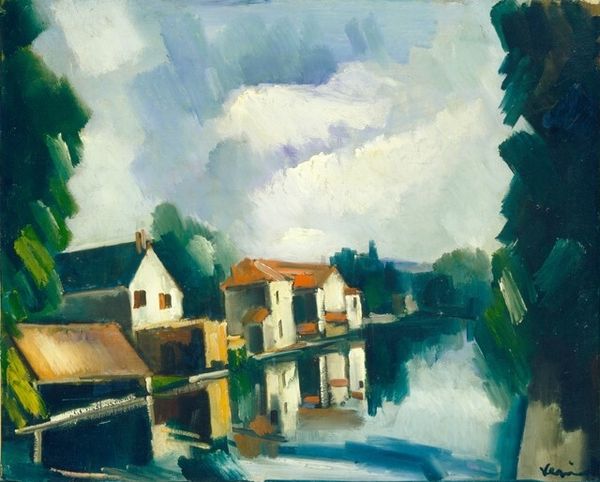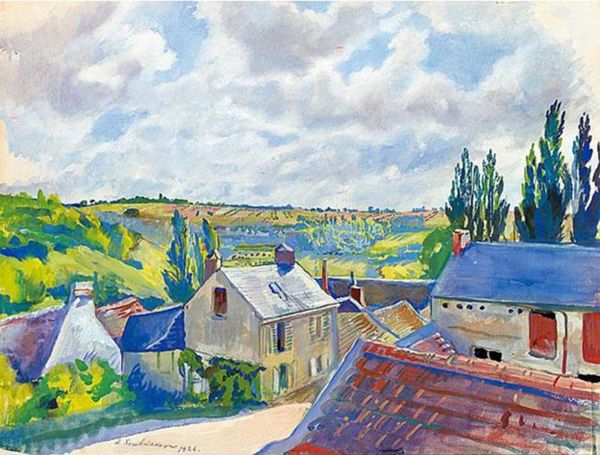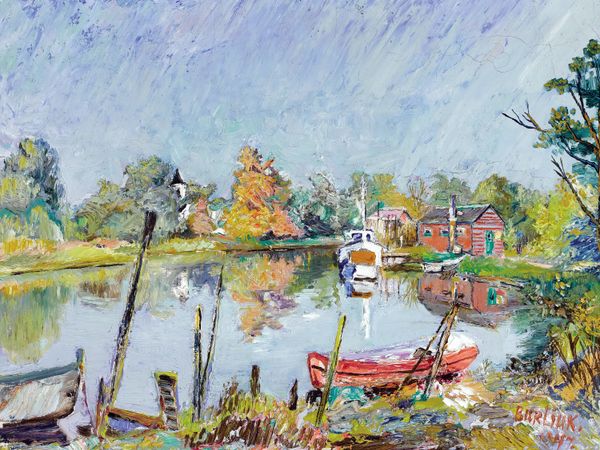
painting, plein-air, oil-paint
#
painting
#
impressionism
#
plein-air
#
oil-paint
#
landscape
#
house
#
impressionist landscape
#
seascape
#
coastline landscape
#
cityscape
#
genre-painting
#
natural environment
#
watercolor
Copyright: Maurice Boitel,Fair Use
Curator: The somewhat coarsely rendered texture initially gives off an almost folksy feeling, doesn't it? Like a painted postcard. Editor: This painting is titled "Hôtel de la plage" by Maurice Boitel. Although it's undated, the visual style situates it firmly within a late-Impressionist or perhaps early Post-Impressionist context. I find myself immediately drawn to the layering of planes—the foreground flowers leading up to the central cluster of buildings. Curator: Agreed. And it makes me curious. Looking at the painting through the lens of artistic production, what were the economic realities that shaped such works? Was Boitel reliant on selling directly to tourists or did he engage with established gallery systems? These types of paintings became highly consumable commodities. Editor: Those questions are critical. I wonder if the "Hôtel" in the title also signals the intended audience. Boitel, like many artists of his time, tapped into the rising tide of tourism. Coastal landscapes and picturesque hotels became key cultural touchstones associated with leisure. We can see the emergence of these spaces as social structures. Curator: Exactly, and this impacts how we approach the artist's choice of materials, too. Was the use of, presumably, cheaper canvases and quicker drying paints driven by budgetary constraints, or a deliberate aesthetic choice related to capturing fleeting light and atmosphere? Perhaps both. There's a dialogue here between economic reality and artistic aspiration. I'm equally curious about the labor aspect - the accessibility of paint, the preparation of the surface - all reflect socio-economic factors impacting artistic creation. Editor: And in its distribution, did these scenes shape perception of these destinations? Were idyllic artworks part of building up the tourism industry and its effects on place? It might be interesting to contrast it with gritty realities or the effects on local ecologies. The artist makes very intentional choices with their portrayal of the seascape. Curator: A thought provoking way to engage with how images shape culture and tourism. Editor: Seeing the role of the art within broader historical shifts allows for insightful engagement with works of art that reach far beyond merely the surface.
Comments
No comments
Be the first to comment and join the conversation on the ultimate creative platform.
